Your cart is currently empty!
Tag: Cooling

Best Practices for Maintaining Optimal Data Center Cooling Temperatures
Data centers are essential for storing and processing large amounts of data for businesses and organizations. However, data centers can generate a significant amount of heat due to the high-powered servers and networking equipment they house. Maintaining optimal cooling temperatures is crucial to prevent overheating and ensure the smooth operation of the data center. Here are some best practices for maintaining optimal data center cooling temperatures.1. Implement Hot Aisle/Cold Aisle Containment: One of the most effective ways to optimize cooling in a data center is by implementing hot aisle/cold aisle containment. This involves arranging server racks in alternating rows so that the cold air intake of one row faces the hot air exhaust of the adjacent row. By segregating hot and cold air streams, this method helps to prevent hot air recirculation and improve cooling efficiency.
2. Use Energy-Efficient Cooling Systems: Investing in energy-efficient cooling systems can help reduce energy consumption and lower cooling costs. Some examples of energy-efficient cooling systems include precision air conditioning units, evaporative cooling systems, and air-side economizers. These systems are designed to provide effective cooling while minimizing energy usage.
3. Monitor Temperature and Humidity Levels: Regularly monitoring temperature and humidity levels in the data center is essential for maintaining optimal cooling conditions. Using environmental monitoring systems can help to identify any potential issues with cooling and quickly address them before they lead to equipment failures or downtime.
4. Optimize Airflow Management: Proper airflow management is key to ensuring that cool air reaches all areas of the data center. This can be achieved by arranging server racks in a way that facilitates the flow of cold air to the servers and the removal of hot air from the equipment. Additionally, using blanking panels, cable management systems, and perforated floor tiles can help to improve airflow and prevent hot spots.
5. Regularly Clean and Maintain Cooling Equipment: Dust and debris can accumulate on cooling equipment, hindering its performance and efficiency. Regularly cleaning and maintaining cooling equipment, such as air filters, fans, and coils, can help to ensure that they operate at peak efficiency. Additionally, scheduling routine maintenance checks and inspections can help identify any potential issues with cooling equipment before they escalate.
6. Consider Using Cold Aisle Containment Doors: Cold aisle containment doors can further enhance cooling efficiency by creating a physical barrier that prevents hot air from mixing with cold air. This can help to maintain consistent temperatures within the data center and improve overall cooling efficiency.
In conclusion, maintaining optimal data center cooling temperatures is essential for the smooth operation of the facility and the longevity of the equipment housed within. By implementing best practices such as hot aisle/cold aisle containment, using energy-efficient cooling systems, monitoring temperature and humidity levels, optimizing airflow management, regularly cleaning and maintaining cooling equipment, and considering cold aisle containment doors, data center operators can ensure that their cooling systems operate efficiently and effectively.

Dai – Optimum Cooling of Data Centers Application of Risk Assessment – N555z

Dai – Optimum Cooling of Data Centers Application of Risk Assessment – N555z
Price : 154.26
Ends on : N/A
View on eBay
Data centers are essential for storing and processing vast amounts of data in today’s digital world. However, with the increasing demand for data processing, data centers are facing challenges in terms of cooling systems and energy efficiency.One solution to address these challenges is the use of Dai-N555z, a cutting-edge cooling technology that optimizes the cooling efficiency of data centers. This technology utilizes a risk assessment approach to identify potential weaknesses in the cooling system and implement targeted solutions to improve overall performance.
By conducting a thorough risk assessment, data center operators can identify areas of inefficiency in their cooling systems, such as hot spots, air flow restrictions, or outdated equipment. With this information, they can then implement specific strategies to address these issues and optimize cooling efficiency.
The application of Dai-N555z in data centers not only improves cooling efficiency but also reduces energy consumption, resulting in cost savings and environmental benefits. Furthermore, by utilizing a risk assessment approach, data center operators can proactively identify and address potential issues before they escalate into larger problems.
Overall, Dai-N555z offers a comprehensive solution for optimizing the cooling of data centers through the application of risk assessment. By implementing this technology, data center operators can improve performance, reduce costs, and enhance sustainability in their operations.
#Dai #Optimum #Cooling #Data #Centers #Application #Risk #Assessment #N555z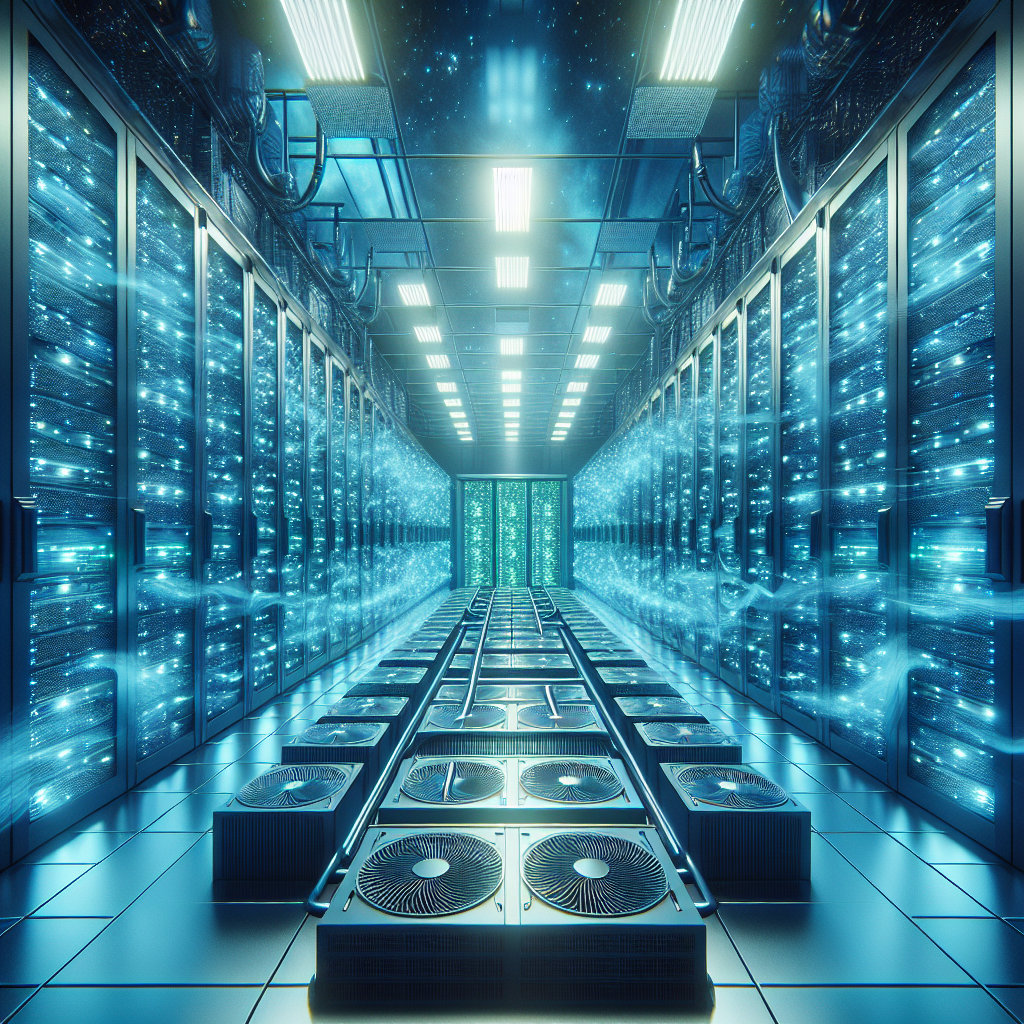
Maximizing Energy Efficiency in Data Center Cooling Systems
Data centers are essential for storing and processing vast amounts of data for businesses, governments, and individuals. However, they also consume a significant amount of energy to keep the servers and equipment cool. Maximizing energy efficiency in data center cooling systems is crucial to reduce operating costs, lower carbon emissions, and ensure sustainable operations.There are several strategies that data center operators can employ to maximize energy efficiency in their cooling systems. One of the most effective approaches is to design and implement a holistic cooling system that considers the layout of the data center, the equipment being used, and the environmental conditions in which the data center operates. By optimizing the placement of cooling units, air ducts, and server racks, operators can reduce energy consumption and improve cooling efficiency.
Another important strategy is to use advanced cooling technologies, such as liquid cooling systems, economizers, and hot aisle/cold aisle containment systems. Liquid cooling systems use water or other fluids to remove heat from servers, which is more efficient than traditional air cooling methods. Economizers take advantage of cool outside air to cool the data center, reducing the need for mechanical cooling. Hot aisle/cold aisle containment systems separate hot and cold air streams, preventing them from mixing and improving cooling efficiency.
Regular maintenance and monitoring of cooling systems are also essential for maximizing energy efficiency. By conducting routine inspections, cleaning air filters, and checking for leaks or malfunctions, operators can ensure that cooling systems are operating at peak efficiency. Additionally, monitoring temperature and humidity levels in the data center can help operators identify areas where energy efficiency can be improved and make adjustments accordingly.
Finally, data center operators can maximize energy efficiency by investing in energy-efficient cooling equipment and adopting best practices for cooling system design and operation. This includes using energy-efficient chillers, pumps, and fans, as well as implementing temperature and airflow management strategies to optimize cooling performance.
In conclusion, maximizing energy efficiency in data center cooling systems is essential for reducing operating costs, lowering carbon emissions, and ensuring sustainable operations. By implementing a holistic cooling system design, using advanced cooling technologies, conducting regular maintenance and monitoring, and investing in energy-efficient equipment, data center operators can achieve significant energy savings and improve overall efficiency in their operations.
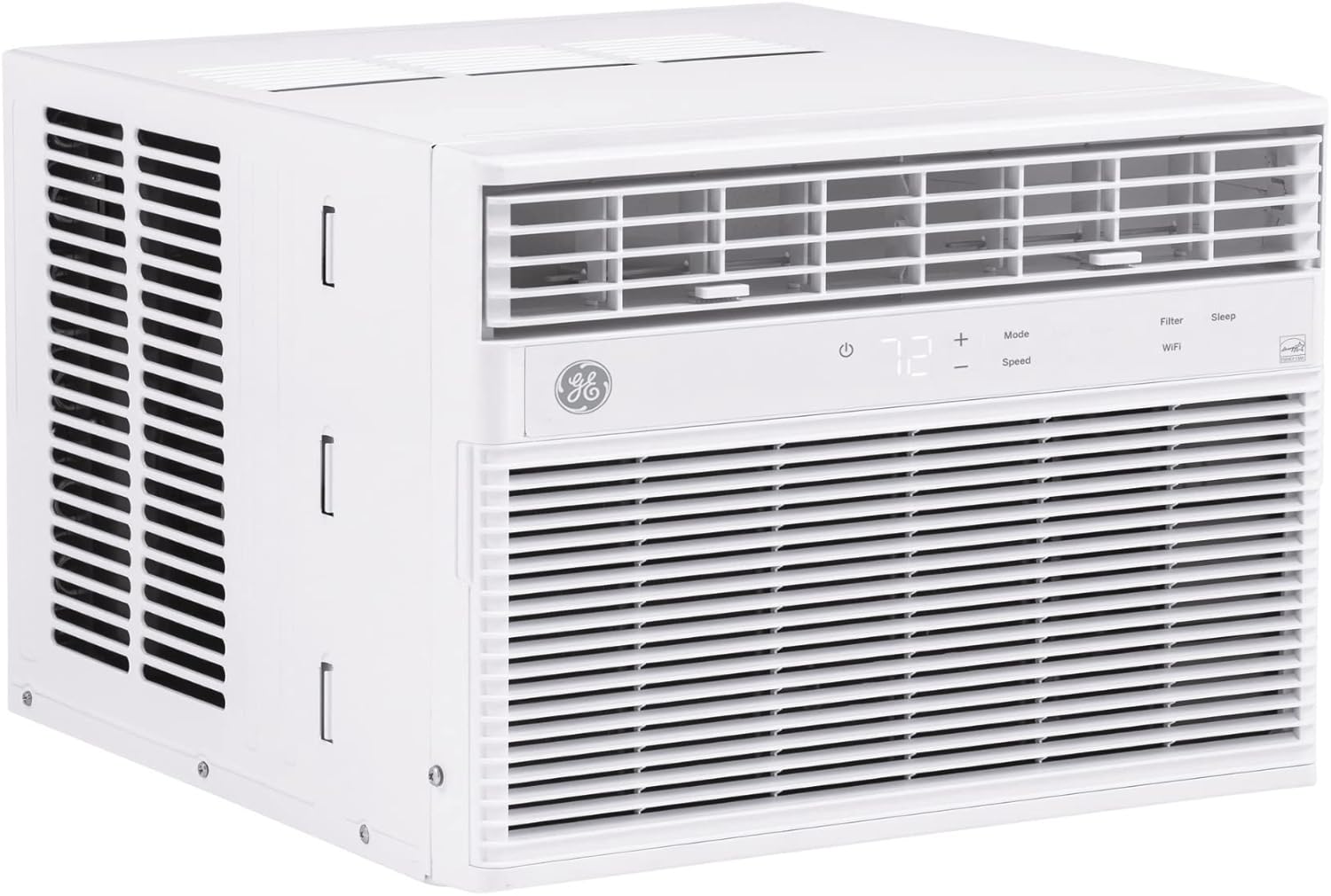
GE Window Air Conditioner 10000 BTU, Wi-Fi Enabled, Energy-Efficient Cooling for Medium Rooms, 10K BTU Window AC Unit with Easy Install Kit, Control Using Remote or Smartphone App
Price: $331.00
(as of Nov 21,2024 02:56:39 UTC – Details)
As the #1 Window Air Conditioner Brand in the United States, GE Appliances is dedicated to providing the right solutions for rooms of any size. Our Energy Star certified window air conditioners are designed to offer exceptional comfort while minimal noise, and our latest WiFi connected technology makes these products versatile and easy to use. This 10000 BTU smart window air conditioner cools medium-sized rooms up to 450 square feet. Energy-efficient cooling with 3 cooling modes and 3 fan speeds provide flexible and optimal home comfort. Integration with the SmartHQ app allows you to monitor, schedule, and control your connected air conditioner from anywhere, or use the electronic controls with included remote to easily to adjust and manage your settings. This AC installs easily in a double hung window with included EZ Mount window kit and fixed chassis. Additional features like eco mode, power interruption restart, 24-hour on/off timer, and removable filter offer ease of use and maintenance.
GE ENERGY STAR 10000 BTU SMART WINDOW AIR CONDITIONER – Designed to efficiently cool rooms up to 450 sq ft; easy install kit included so you can start cooling right away
MAXIMUM COMFORT FOR MEDIUM ROOMS: This AC unit is the right size for delivering quiet, 10000 BTU cooling capacity to medium-sized areas like living rooms and family rooms; Energy Star-certified for lower energy use and utility bills
SMART, EASY OPERATION: Integration with the SmartHQ app allows you to monitor, schedule, and control your smart AC unit from anywhere, while compatibility with your favorite devices like Amazon Alexa and Google Assistant makes everyday use easier and more versatile than ever; or you can use the included remote control
ECO MODE SAVES ENERGY: When the room is cool enough, Eco Mode automatically turns off the fan and compressor, saving you money on utilities; energy-efficient with 3 cooling modes and 3 fan speeds to provide flexible and optimal room temperature
EASY INSTALLATION AND CLEANING: This AC has a fixed chassis and installs easily in a double hung window (size: W 25 – 36.625″ x H 14.563″) with included EZ Mount installation kit; slide-out, washable filter makes cleaning a breeze to keep your unit running its best when cleaned every 30 daysCustomers say
Customers appreciate the value for money and ease of installation of the air conditioner. They mention it works excellently, is very much worth the money, and is easy to install and control. Customers also appreciate its look and power. However, some customers have mixed opinions on functionality, ac cooling, noise level, and durability.
AI-generated from the text of customer reviews
Looking to beat the heat this summer? Look no further than the GE Window Air Conditioner 10000 BTU. This energy-efficient cooling unit is perfect for medium-sized rooms, providing powerful and reliable cooling when you need it most.With Wi-Fi connectivity, this 10K BTU window AC unit can be controlled from anywhere using the GE Appliances Comfort app on your smartphone. Set the perfect temperature, adjust fan speeds, and create a cooling schedule all from the palm of your hand.
Installation is a breeze with the included easy install kit, making it simple to set up and start cooling your space in no time. Plus, with the convenience of a remote control, you can easily adjust settings without ever leaving your seat.
Don’t let the summer heat get you down – stay cool and comfortable with the GE Window Air Conditioner 10000 BTU. Order yours today and enjoy a cool and refreshing summer.
#Window #Air #Conditioner #BTU #WiFi #Enabled #EnergyEfficient #Cooling #Medium #Rooms #10K #BTU #Window #Unit #Easy #Install #Kit #Control #Remote #Smartphone #App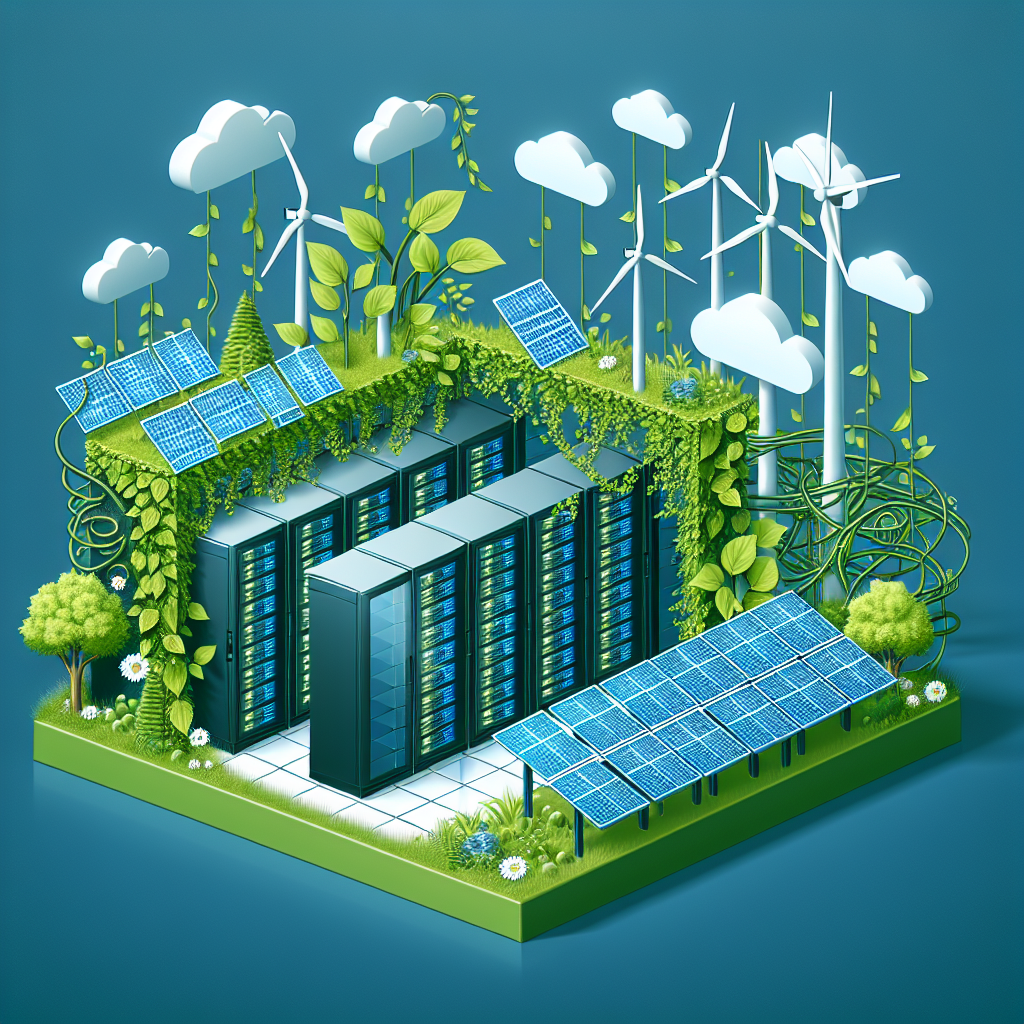
Eco-Friendly Practices for Data Center Cooling and Energy Management
As technology continues to advance at a rapid pace, the demand for data centers is increasing exponentially. These data centers are essential for storing and processing large amounts of data for businesses, organizations, and individuals. However, data centers also consume a significant amount of energy, leading to high electricity bills and a large carbon footprint.In recent years, there has been a growing emphasis on eco-friendly practices for data center cooling and energy management. By implementing sustainable solutions, data centers can reduce their environmental impact while also saving on operational costs. Here are some eco-friendly practices that data centers can adopt:
1. Energy-efficient cooling systems: Cooling systems are essential for maintaining optimal temperatures in data centers to prevent equipment from overheating. However, traditional cooling systems consume a large amount of energy. By upgrading to energy-efficient cooling systems, such as liquid cooling or free cooling, data centers can significantly reduce their energy consumption and carbon emissions.
2. Renewable energy sources: Data centers can also reduce their carbon footprint by sourcing electricity from renewable energy sources, such as solar or wind power. By investing in renewable energy, data centers can reduce their reliance on fossil fuels and lower their environmental impact.
3. Virtualization: Virtualization technology allows data centers to consolidate multiple physical servers into virtual machines, reducing the overall number of servers needed. This not only saves space but also reduces energy consumption and cooling requirements. By optimizing server utilization through virtualization, data centers can improve energy efficiency and reduce their carbon footprint.
4. Temperature and humidity control: Monitoring and controlling temperature and humidity levels in data centers is crucial for efficient cooling and energy management. By using advanced sensors and automation systems, data centers can optimize cooling operations and reduce energy waste. Implementing a hot aisle/cold aisle layout and containment systems can also improve airflow and cooling efficiency.
5. Energy monitoring and management: Data centers can track and analyze their energy consumption using advanced monitoring and management tools. By identifying energy-intensive areas and optimizing energy usage, data centers can reduce their electricity bills and environmental impact. Implementing energy management software can help data centers track energy usage in real-time and make informed decisions to improve efficiency.
By adopting eco-friendly practices for data center cooling and energy management, data centers can reduce their environmental impact and contribute to a more sustainable future. Investing in energy-efficient cooling systems, renewable energy sources, virtualization technology, temperature and humidity control, and energy monitoring and management can help data centers improve efficiency, reduce costs, and minimize their carbon footprint. It is essential for data centers to prioritize sustainability and implement eco-friendly practices to support a greener and cleaner environment.
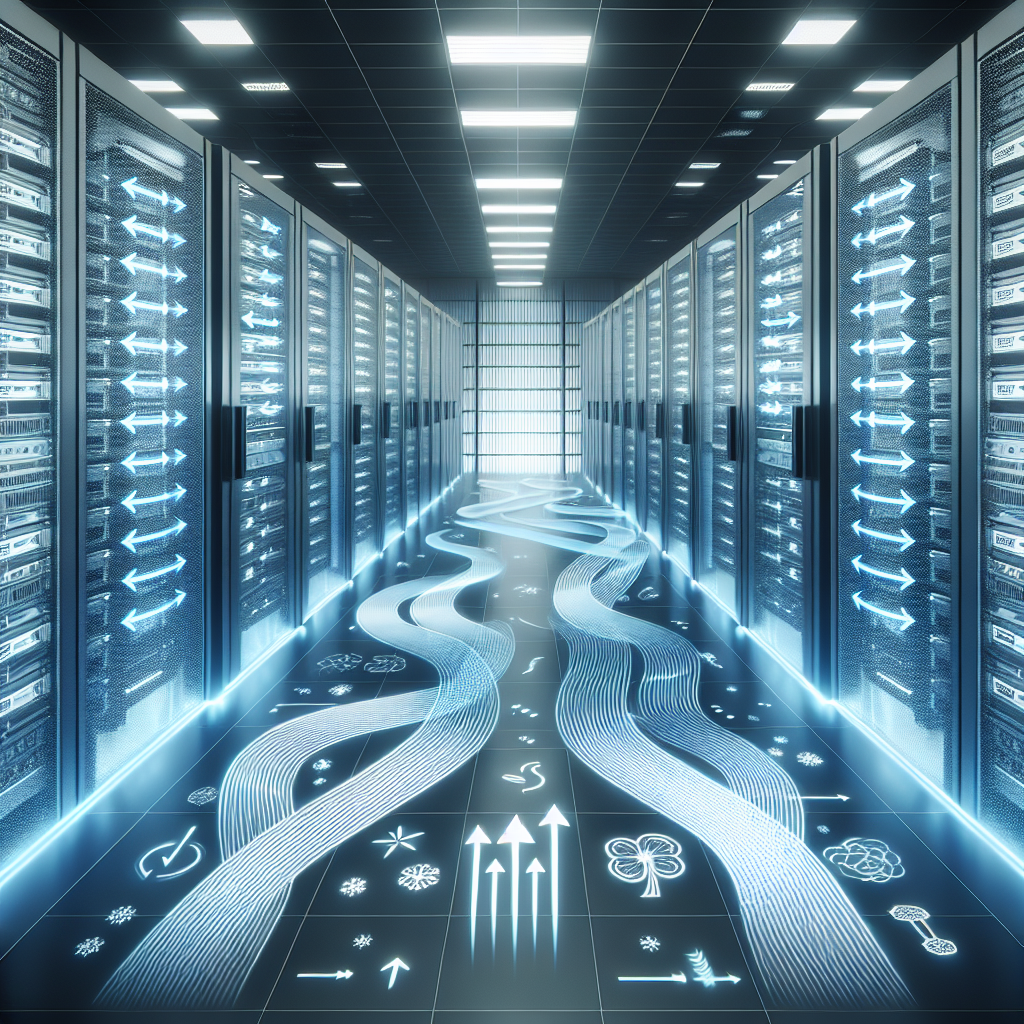
Implementing Energy-Efficient Cooling Solutions in Data Centers
As the demand for data storage and processing continues to increase, data centers are consuming more energy than ever before. In fact, data centers are estimated to consume about 1-2% of the world’s total electricity supply. With the rising costs of energy and growing concerns about the environmental impact of excessive energy consumption, it is more important than ever for data centers to implement energy-efficient cooling solutions.One of the biggest energy consumers in data centers is the cooling systems used to maintain the optimal temperature for servers and other equipment. Traditional cooling systems, such as air conditioning units, can be incredibly inefficient and costly to operate. However, there are a number of energy-efficient cooling solutions that data centers can implement to reduce their energy consumption and costs.
One of the most effective energy-efficient cooling solutions for data centers is the use of free cooling systems. Free cooling systems take advantage of natural cooling methods, such as outside air or water, to cool the data center without the need for traditional air conditioning units. By utilizing free cooling systems, data centers can significantly reduce their energy consumption and operating costs.
Another energy-efficient cooling solution for data centers is the use of containment systems. Containment systems help to isolate hot and cold air streams within the data center, preventing them from mixing and reducing the efficiency of the cooling systems. By implementing containment systems, data centers can optimize their cooling systems and reduce their energy consumption.
Additionally, data centers can also benefit from the use of high-efficiency cooling equipment, such as variable speed fans and pumps. These types of equipment are designed to adjust their speed and output based on the cooling needs of the data center, allowing for greater energy efficiency and cost savings.
In conclusion, implementing energy-efficient cooling solutions in data centers is essential for reducing energy consumption, lowering operating costs, and minimizing the environmental impact of data center operations. By utilizing free cooling systems, containment systems, and high-efficiency cooling equipment, data centers can significantly improve their energy efficiency and sustainability. It is crucial for data centers to prioritize energy efficiency in their cooling systems in order to continue meeting the growing demand for data processing while minimizing their environmental footprint.

Optimum Cooling of Data Centers : Application of Risk Assessment and Mitigati…

Optimum Cooling of Data Centers : Application of Risk Assessment and Mitigati…
Price : 132.06
Ends on : N/A
View on eBay
Optimum Cooling of Data Centers: Application of Risk Assessment and Mitigation StrategiesData centers are essential for the functioning of modern businesses, housing the servers and equipment that store and process vast amounts of information. However, one of the biggest challenges faced by data center operators is keeping the equipment cool to prevent overheating and potential system failures.
To achieve optimum cooling in data centers, it is crucial to conduct a thorough risk assessment to identify potential vulnerabilities and develop mitigation strategies. This involves analyzing factors such as the layout of the data center, the type and density of equipment, and the environmental conditions.
One common risk in data centers is the formation of hot spots, where certain areas of the facility experience higher temperatures than others. This can be caused by inadequate airflow, poor equipment placement, or faulty cooling systems. By using thermal imaging and computational fluid dynamics simulations, operators can pinpoint these hot spots and implement targeted cooling solutions, such as adding additional cooling units or adjusting the layout of equipment.
Another risk to consider is the potential for cooling system failures, which can lead to catastrophic data loss and downtime. To mitigate this risk, redundant cooling systems should be in place to ensure continuous operation in the event of a failure. Regular maintenance and monitoring of cooling equipment are also essential to detect and address issues before they escalate.
In addition to technical solutions, operational best practices can also contribute to optimum cooling in data centers. This includes implementing temperature monitoring systems, establishing temperature thresholds, and training staff on proper cooling management protocols.
By applying a comprehensive risk assessment and mitigation approach, data center operators can ensure optimum cooling and prevent costly downtime due to overheating. Investing in cooling infrastructure and implementing best practices will not only protect valuable equipment but also support the overall reliability and performance of the data center.
#Optimum #Cooling #Data #Centers #Application #Risk #Assessment #Mitigati..
The Future of Data Center Cooling: Trends and Technologies to Watch
In recent years, data centers have become an essential part of our daily lives. From storing our personal photos and videos to hosting the websites we visit every day, data centers play a crucial role in the digital world. However, as data centers become more prevalent, the issue of cooling them efficiently and effectively has become a major concern.Traditional cooling methods, such as air conditioning, have been the go-to solution for data center cooling for many years. However, as data centers continue to grow in size and complexity, these methods are no longer sufficient. The future of data center cooling lies in new trends and technologies that are set to revolutionize the way we keep our data centers cool.
One trend that is gaining traction in the data center cooling industry is the use of liquid cooling solutions. Liquid cooling involves using liquid, such as water or a specialized coolant, to cool the servers and other equipment in a data center. This method is much more efficient than traditional air cooling, as liquids have a much higher heat capacity than air, allowing them to absorb heat more effectively. Liquid cooling also allows for more precise temperature control, reducing the risk of overheating and equipment failure.
Another trend in data center cooling is the use of modular and scalable cooling solutions. As data centers continue to grow in size and complexity, the need for flexible cooling solutions that can be easily expanded or modified to meet changing demands is becoming increasingly important. Modular cooling systems allow data center operators to add or remove cooling capacity as needed, making it easier to adapt to changing requirements.
In addition to new trends, there are also emerging technologies that are set to revolutionize data center cooling in the future. One such technology is the use of artificial intelligence (AI) and machine learning to optimize cooling efficiency. By analyzing data from sensors and other sources, AI algorithms can predict when and where cooling is needed most, allowing for more efficient use of cooling resources.
Another emerging technology is the use of direct liquid cooling, where liquid is brought directly into contact with the heat-producing components of a server. This method is much more efficient than traditional air cooling, as it allows for more direct heat transfer and better temperature control. Direct liquid cooling also reduces the need for fans, which can be noisy and energy-intensive.
Overall, the future of data center cooling is set to be a combination of new trends and technologies that will revolutionize the way we keep our data centers cool. From liquid cooling solutions to modular and scalable systems, data center operators have a range of options to choose from when it comes to cooling their facilities. As data centers continue to grow in size and complexity, it is essential that operators stay ahead of the curve and invest in the latest cooling technologies to ensure their data centers remain efficient and reliable.
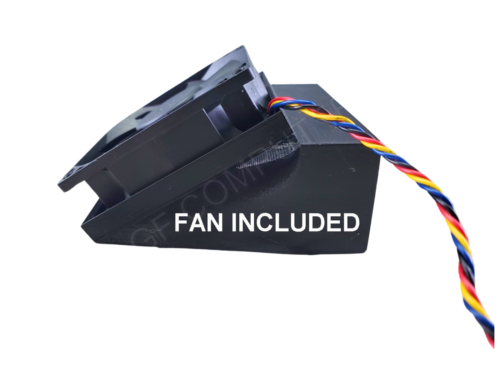
Intel Data Center Max Xe-HPC 1100 1350 1550 Cooling Shroud AI Accelerator Card

Intel Data Center Max Xe-HPC 1100 1350 1550 Cooling Shroud AI Accelerator Card
Price : 34.98
Ends on : N/A
View on eBay
Intel Data Center Max Xe-HPC 1100 1350 1550 Cooling Shroud AI Accelerator CardIntroducing the latest innovation from Intel, the Data Center Max Xe-HPC AI Accelerator Card. Designed to deliver unparalleled performance and efficiency for AI workloads in data centers, this cooling shroud is a game-changer in the world of artificial intelligence.
With the ability to support Intel Xe-HPC 1100, 1350, and 1550 processors, this cooling shroud is the perfect solution for data centers looking to maximize their AI capabilities. The advanced cooling technology ensures optimal thermal performance, allowing for continuous operation even under heavy workloads.
The AI accelerator card also features built-in AI acceleration capabilities, enabling faster processing speeds and improved efficiency for AI applications. Whether you’re running machine learning algorithms, deep learning models, or other AI workloads, this card will help you achieve exceptional results.
Don’t miss out on the opportunity to elevate your data center’s AI capabilities with the Intel Data Center Max Xe-HPC Cooling Shroud AI Accelerator Card. Contact us today to learn more about this groundbreaking technology and how it can benefit your business.
#Intel #Data #Center #Max #XeHPC #Cooling #Shroud #Accelerator #Card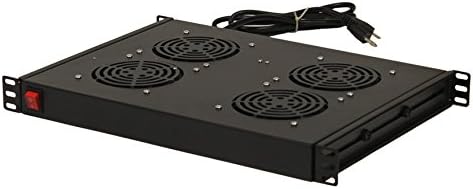
NavePoint Rack Cabinet Mounted Server 4 Fan Unit Cooling System with 4 Fans 110V Blk 1U
Price: $127.99
(as of Nov 21,2024 00:56:57 UTC – Details)
Dimensions: 1.75″H x 19″W x 13″D
4 Fans
Switches: Lighted ON/OFF rocker switch
Color: Black
Input Voltage: 110V 50/60HzCustomers say
Customers like the cooling capacity of the computer cooling device. They mention it works well for cooling and helps to lower the rack temperature. However, some customers have reported that the noise level is louder than expected.
AI-generated from the text of customer reviews
Introducing the NavePoint Rack Cabinet Mounted Server 4 Fan Unit Cooling System with 4 Fans 110V Blk 1U!Are you tired of your server equipment overheating and causing issues with your network? Look no further than this powerful cooling system from NavePoint. With four high-quality fans and a 110V power supply, this unit is designed to keep your servers running smoothly and efficiently.
Not only does this cooling system help prevent overheating, but it also helps extend the lifespan of your equipment by maintaining a consistent and optimal temperature. Plus, its sleek black design will seamlessly blend in with your existing rack cabinet setup.
Don’t let heat be the downfall of your server equipment. Invest in the NavePoint Rack Cabinet Mounted Server 4 Fan Unit Cooling System today and keep your network running cool and reliable. #servercooling #rackcabinet #networksolutions
#NavePoint #Rack #Cabinet #Mounted #Server #Fan #Unit #Cooling #System #Fans #110V #Blk
